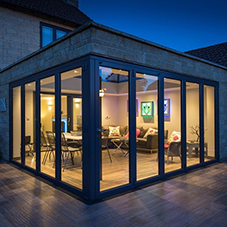The wood flooring industry has made great strides in recent years in terms of product diversity and technology. The aim is to make wood flooring suitable across a wider spectrum of interiors and to improve longevity of the floor. In this technical overview, we will look at the two flooring construction alternatives available nowadays and explain the strength of each type.
Wood Flooring Construction:

To the untrained eye, all wood flooring will likely look similar. However, a closer inspection will reveal two very distinct construction types that are designed to accommodate different interiors. As an industry professional, you should get familiar with the two types.
Solid Wood Flooring – The most widely fitted wood flooring option is the solid type. Each floorboard is made from 100% natural hardwood sourced from Europe (Oak), North America (Walnut) or even from exotic places using ethical sourcing often under an FSC (Forest Stewardship Council) approved scheme.
Engineered Wood Flooring – A close alternative is the engineered wood floorboard type that is made from a veneer layer of solid wood and manmade backing. Often referred to as ‘machined’ wood flooring, it looks completely identical to solid wood flooring due to the use of real hardwood veneer as the top layer. Below this layer, you will come across up to 7 layers of artificial materials from MDF to Plywood depending on the manufacturer.
Choosing A Construction Type:

The decision between the two is never based on the visual aspect, as they both look similar when fitted and rarely based on budget constrains, as both are priced similarly. It therefore takes a more practical form, weighing the strengths and weakness of each type.
When To Choose Solid – Of the two types, solid is the clear winner in terms of strength, which makes it a prized option in projects where the floor is likely to sustain high foot traffic such as in commercial projects. Furthermore, the use of wood through and through means that it is possible to sand the floor many times during its lifetime thereby improving its suitability in the interior from a visual perspective.
The sanding process removes a minimum of 1mm layer of wood to expose new wood thereby eliminating surface scuffs and stains that occurred over the years. It is a cost effective manner to rejuvenate the floor as oppose to replacing it.
When To Choose Engineered – The biggest weakness of solid wood is the biggest strength of engineered wood. Solid wood reacts to temperature changes in a manner that can damage the wood quickly. In hot even humid conditions the wood will expand and in cold even wet conditions the wood will contract. It makes solid wood unsuitable to fit over under floor heating and in high humidity areas such as the kitchen, bathroom, basement and certain extensions. However, engineered wood floor due to its diverse core of real hardwood and manmade backing is completely suitable for such conditions. Theoretically it can also be sanded, though that will depend on the thickness of the hardwood veneer layer, as 1mm will have to be removed. Typical thickness of the veneer layer in engineered wood flooring is between 3mm to 6mm thick.
Nowadays wood floor can fit most indoor projects, it is simply a matter of matching a suitable type to the interior.
Information by Jonathan Sapir. Jonathan is the MD of Wood and Beyond, a UK based hardwood supplier. Images by Wood and Beyond.
Further Reading and Viewing: Solid Wood Flooring video review / Engineered Wood Flooring video review.
Related Blog Articles



![Communicating with specifiers & developing a personalised persona [EVENT] Communicating with specifiers & developing a personalised persona [EVENT]](/20/blogentry/00/04/48/th382.png)







